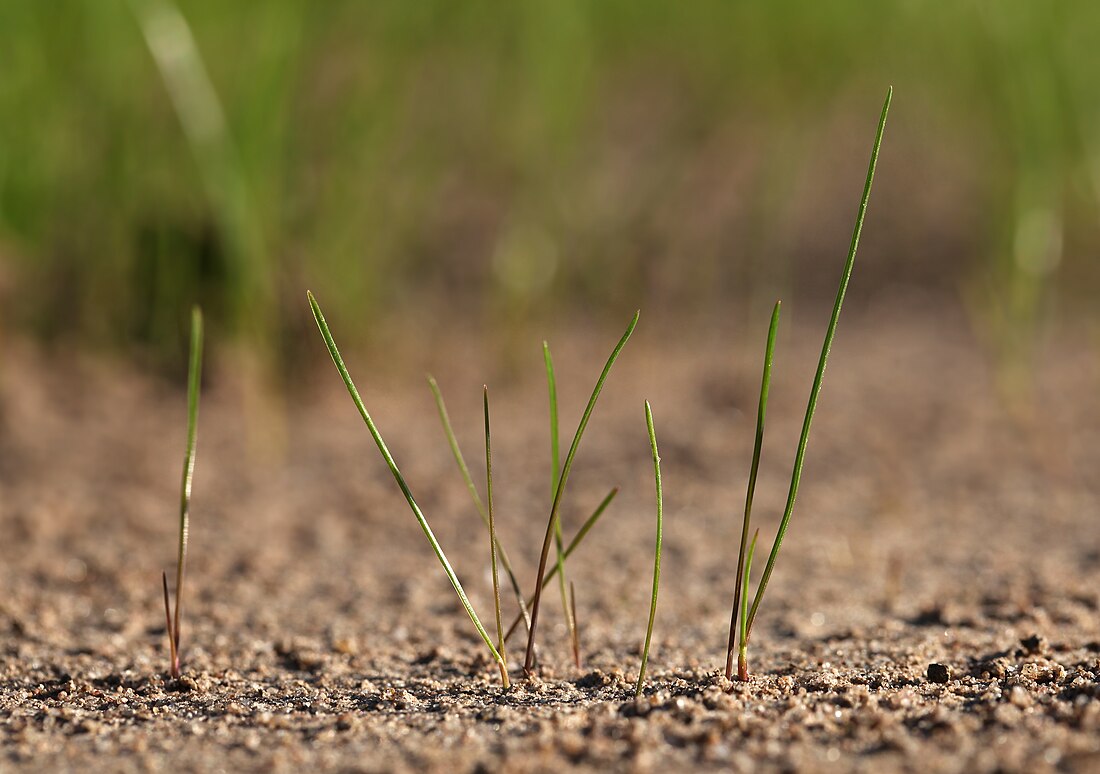Graminoid
Herbaceous plant with grassy morphology From Wikipedia, the free encyclopedia
In botany and ecology, a graminoid refers to a herbaceous plant with a grass-like morphology,[1] i.e., elongated culms with long, blade-like leaves. They are contrasted with forbs, herbaceous plants without grass-like features.
This article needs additional citations for verification. (June 2019) |

The plants most often referred to include the families Poaceae (grasses in the strict sense), Cyperaceae (sedges), and Juncaceae (rushes). These are not closely related but belong to different clades in the order Poales. The grasses (Poaceae) are by far the largest family, with some 12,000 species.
Ecology
Besides their similar morphology, graminoids share a widespread occurrence and often dominance in open habitats such as grasslands or marshes. They can, however, also be found in the understory of forests. Sedges and rushes tend to prefer wetter habitats than grasses.
Gallery
- Examples of graminoid plants
- Common rush (Juncus effusus), Juncaceae
- Nutsedge (Cyperus capitatus), Cyperaceae
- Festuca cinerea, Poaceae
Etymology
Look up graminoid in Wiktionary, the free dictionary.
The word graminoid is derived from Latin grāmen 'grass; herb', with the suffix -oid denoting '-like; resembling, characteristic of'.
See also
References
Wikiwand - on
Seamless Wikipedia browsing. On steroids.



